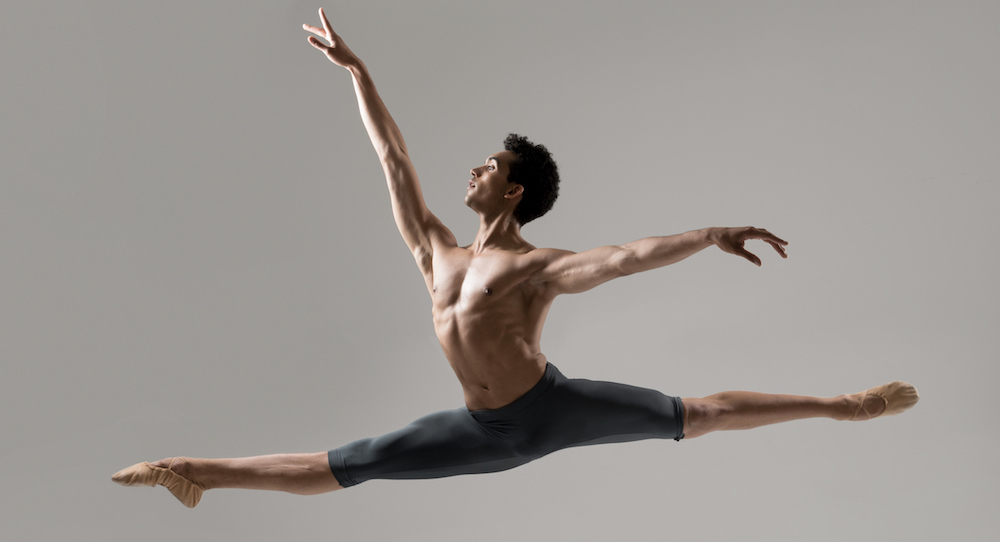A picture is worth a thousand words. And unfortunately, sometimes words can be bad. Don’t let your next audition photo give the wrong impression. Instead, invest in yourself and your photos, and follow this advice from renowned dance photographer Rachel Neville. A winning photo could help you score you your next gig, summer intensive or full time dance programme.

Clarice Armstrong. Photo by Rachel Neville.
DON’T work with a non-dance photographer.
You want to find a photographer who is experienced with shooting dance and regularly does audition photos. “You have invested countless years, finances and energy into your career,” Neville says. “Many companies pre-select their applicant via their photos and reels. This is not an area that you should take lightly. Photographers who know not just how to light you but also how to adjust your lines and coach you into your best energy and performance quality are what you are looking for.”
DON’T shoot with a complicated background.

Gwendolyn Baum. Photo by Rachel Neville.
Neville advises against having your photos taken outside or in front of a complicated background. “Directors want to be able to clearly and easily see your lines, energy and personality,” she says. “You don’t want to complicate your images with things that distract from that.”
DO test your poses beforehand.

Harper Watters. Photo by Rachel Neville.
“Everyone’s joints are slightly different, and you can’t assume that the angle your friend shoots her attitude at will be the same angle that makes yours look its best,” Neville explains. “If you don’t test to fine your lines for the camera, you could end up with your legs appearing shorter, less turned out or less straight than they really are.”
Research the companies/programs you’re auditioning for to get a feel of how much classical or contemporary to include in your photos.

Shannon Harkins. Photo by Rachel Neville.
DO work on your “face”.
“The energy and expression you are working with is probably about 30-50 percent of what directors are looking for,” Neville assures. “Images without good facial expression always fall flat for audition photos. Directors need to be able to see what you look like in full smile, in full joy of movement. Even if you don’t really like your smile, I tell all my clients that you need to use at least one in their packages.”

Eileen Kim. Photo by Rachel Neville.
DO keep makeup light.
For headshots, Neville says it’s best to wear light makeup – more than everyday but not as much as stage. “Avoid heavy liner, but do make sure to contour your face a little bit, and more for body shots,” she adds. “When your head becomes only a small part of the image, you need to go much heavier on the eyes and features to help show your expression. I do suggest working with a makeup artist if you can afford it. It makes a big difference to have someone who knows what to do for photographs.”
DO dress simply.

Lola Crist. Photo by Rachel Neville.
Keep clothing simple, and avoid too many patterns and straps that can cut lines and distract. “Remember, it’s about your lines and energy, not a fashion shoot,” Neville points out. “They want to be able to clearly see what they are ‘buying’. They need to be able to envision you in different costumes or in the line of the corps or in particular choreography.”
For ladies, Neville suggests solid colors, simple leotards that are flattering, tights if appropriate, and shorts/sports bra if it’s more of a contemporary, muscular look. For men, she recommends tights with or without a shirt or a biketard.
DON’T rush the shoot.

Anna Kate Walker. Photo by Rachel Neville.
Be patient when taking photographs. Neville says that sometimes she only gets two or three good shots in an hour’s time. “Shots need to be built from the bottom up, starting with the supporting leg, moving up through the rest of the body and heart/face,” she adds. “This process takes time. Most dancers don’t understand this process at first and risk getting frustrated with themselves that they don’t look the way they thought they could. I assure you that you almost always do; you just have to have patience to get there. Working in front of a camera is completely different than being in the studio or on stage. It’s a skill that you have to learn.”
If you don’t have access to a dance photographer, take a fellow dancer or teacher with you to help you finesse your shots. Visit Rachel Neville’s dancer education portal for videos that can help you learn how to be in front of the camera and find those lines: rachelneville.com.
By Laura Di Orio of Dance Informa.

















